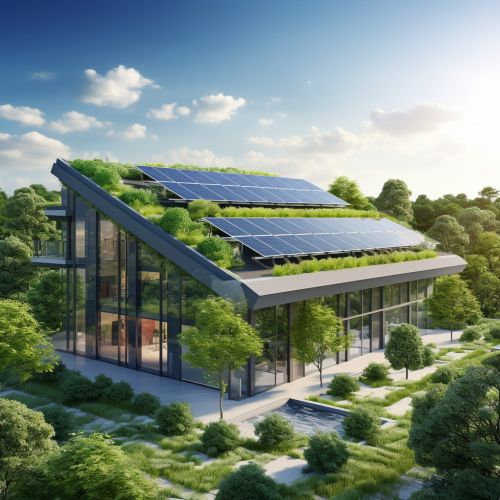Sustainable Architecture
Introduction
Sustainable architecture, also known as green architecture, is a design philosophy that aims to minimize the negative environmental impact of buildings by enhancing efficiency and moderation in the use of materials, energy, and development space. This is achieved through a variety of design techniques, technologies, and the reuse and recycling of materials.
Principles of Sustainable Architecture
The principles of sustainable architecture are rooted in the idea that the built environment should not disrupt or negatively impact the natural environment. This involves the use of renewable energy sources, the reduction of waste, and the use of materials that are environmentally friendly and sustainable.


Design Techniques in Sustainable Architecture
Sustainable architecture employs a variety of design techniques to achieve its goals. These include passive solar design, which takes advantage of the sun's energy for heating and cooling; natural ventilation, which reduces the need for mechanical heating and cooling; and daylighting, which reduces the need for artificial lighting.
Technologies in Sustainable Architecture
Sustainable architecture also makes use of a variety of technologies to reduce the environmental impact of buildings. These include solar panels, wind turbines, and geothermal heating and cooling systems. In addition, sustainable architecture often incorporates water-saving technologies, such as rainwater harvesting and greywater recycling.
Materials in Sustainable Architecture
The choice of materials is a crucial aspect of sustainable architecture. Materials should be sustainably sourced, have low embodied energy, and be recyclable or biodegradable. Examples of such materials include bamboo, recycled steel, and rammed earth.
Benefits of Sustainable Architecture
Sustainable architecture offers a variety of benefits, both environmental and economic. It reduces the environmental impact of building, conserves natural resources, and can result in significant energy savings. In addition, sustainable architecture can improve indoor air quality and provide a healthier and more comfortable living environment.
Challenges and Criticisms of Sustainable Architecture
Despite its many benefits, sustainable architecture also faces a number of challenges and criticisms. These include the higher upfront costs associated with sustainable design and technologies, the lack of awareness and understanding about sustainable architecture, and the need for a shift in societal attitudes and behaviors.
Future of Sustainable Architecture
The future of sustainable architecture looks promising, with advances in technology and growing awareness about environmental issues. However, for sustainable architecture to become mainstream, it will require changes in building codes and regulations, as well as a shift in public perception and demand.
